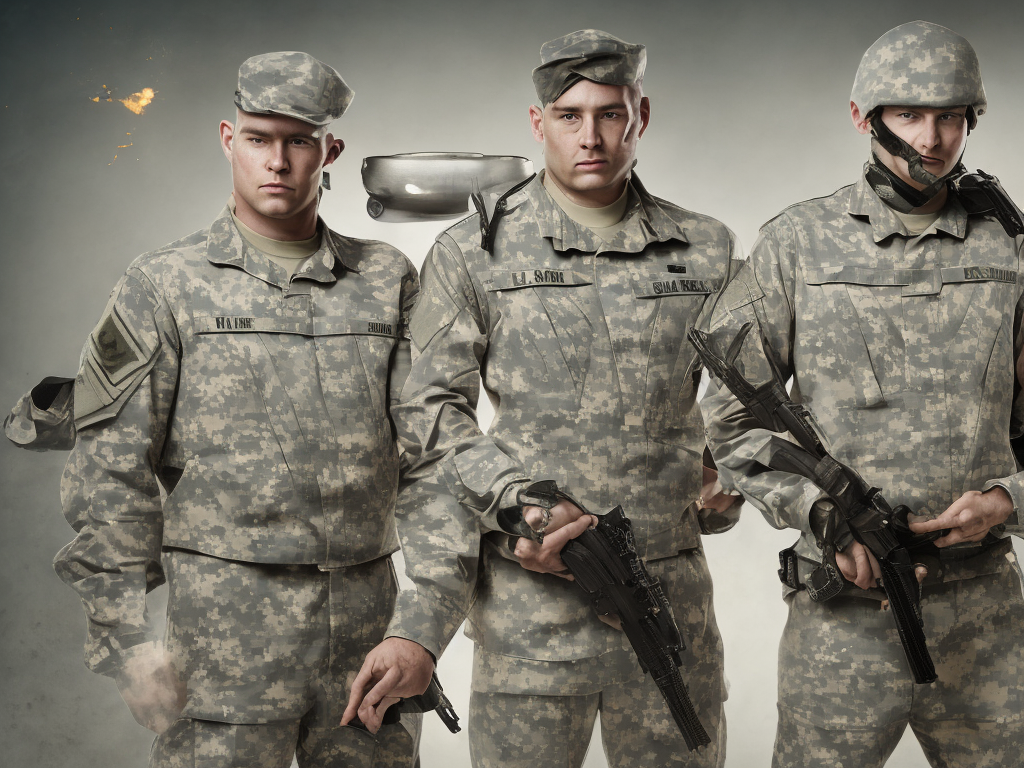
For many people, the terms "army" and "paramilitary" might seem interchangeable. However, the two have important differences that impact their respective roles, structures, and functions. Understanding these differences is important for anyone who wants to better understand the nature of military organizations and their roles in society. In this article, we'll explore the key differences between the army and paramilitary, looking at aspects such as their training, structure, and responsibilities.
The first and most obvious difference between the army and paramilitary is their level of training. While both organizations primarily exist to protect their country and its citizens, the training that they receive is different. Armies, for example, are typically composed of full-time soldiers who undergo a rigorous and lengthy training process. This training often takes several months or even years and is designed to prepare soldiers for the challenges and risks they will face in combat. The training programs for soldiers often cover topics such as weapons and tactics, physical fitness, survival skills, and leadership.
By contrast, paramilitary organizations typically require less intensive training. These groups often consist of part-time or volunteer members who receive training in a more condensed time period. This training is often designed to provide individuals with basic skills such as marksmanship, first aid, and navigation. The level of training required for paramilitary organizations often depends on their specific functions and roles. For example, a paramilitary group that is responsible for protecting a specific location, such as a government building or embassy, may undergo more extensive training than a group that simply supports law enforcement efforts.
Another key difference between the army and paramilitary is their structure. Armies are often hierarchical organizations, with ranks and positions based on seniority and experience. The structure of the army is typically designed to support chain of command, with each member of the organization having a specific role and a clear understanding of their responsibilities. This rigid structure can sometimes hinder flexibility and adaptability, but it also helps ensure that orders are followed and objectives are achieved.
On the other hand, paramilitary organizations are often more decentralized, with less emphasis on hierarchy and more collaboration among members. Members of paramilitary organizations may be assigned into different units based on their skills and abilities, but these units may not have the same formal structure as those within an army. This decentralized structure allows for more flexibility and creativity in responding to challenges and crises, but it also means that coordination and communication can be more challenging.
A third difference between the army and paramilitary is their responsibilities. Armies are primarily tasked with defending their country from external threats, such as a foreign invasion or terrorist attack. They are often responsible for securing borders, engaging in combat with enemy forces, and protecting critical infrastructure such as military bases and airports. The responsibilities of an army may also extend to providing support for humanitarian and disaster relief efforts, both domestically and abroad.
By contrast, paramilitary organizations typically have more specific roles, often focused on supporting law enforcement operations. These organizations may be tasked with protecting cities from internal threats, such as riots or acts of terrorism, or supporting more specialized operations such as hostage rescues or drug interdictions. In some cases, paramilitary organizations may also be involved in training and supporting allied forces, or conducting covert operations that are not officially sanctioned by the government.
Finally, there is a difference in the level of authority and oversight between the army and paramilitary. Armies are often more strictly controlled and overseen by government officials, with clear laws and regulations dictating how they can use their resources and engage in combat. The chain of command ensures that orders are followed and that decisions are made in accordance with government policies and protocols. Armies are also held to a high standard of conduct and professionalism, with strict codes of ethics and accountability mechanisms for when things go wrong.
Paramilitary organizations typically operate under more flexible regulations and may be subject to less official oversight. This can lead to greater autonomy and independence for individual members, but it also raises concerns about their conduct and their use of force. Paramilitary organizations may be subject to less accountability than armies, with fewer checks and balances on their decision-making processes.
In conclusion, the army and paramilitary are two distinct types of military organizations with different training, structures, functions, and responsibilities. Understanding the differences between these two organizations is important for those studying military affairs, international relations, and security studies. By understanding these differences, we can better appreciate the unique challenges and opportunities that each organization offers and make more informed decisions about their respective roles and functions in society.
 Self-Instruct
Self-Instruct